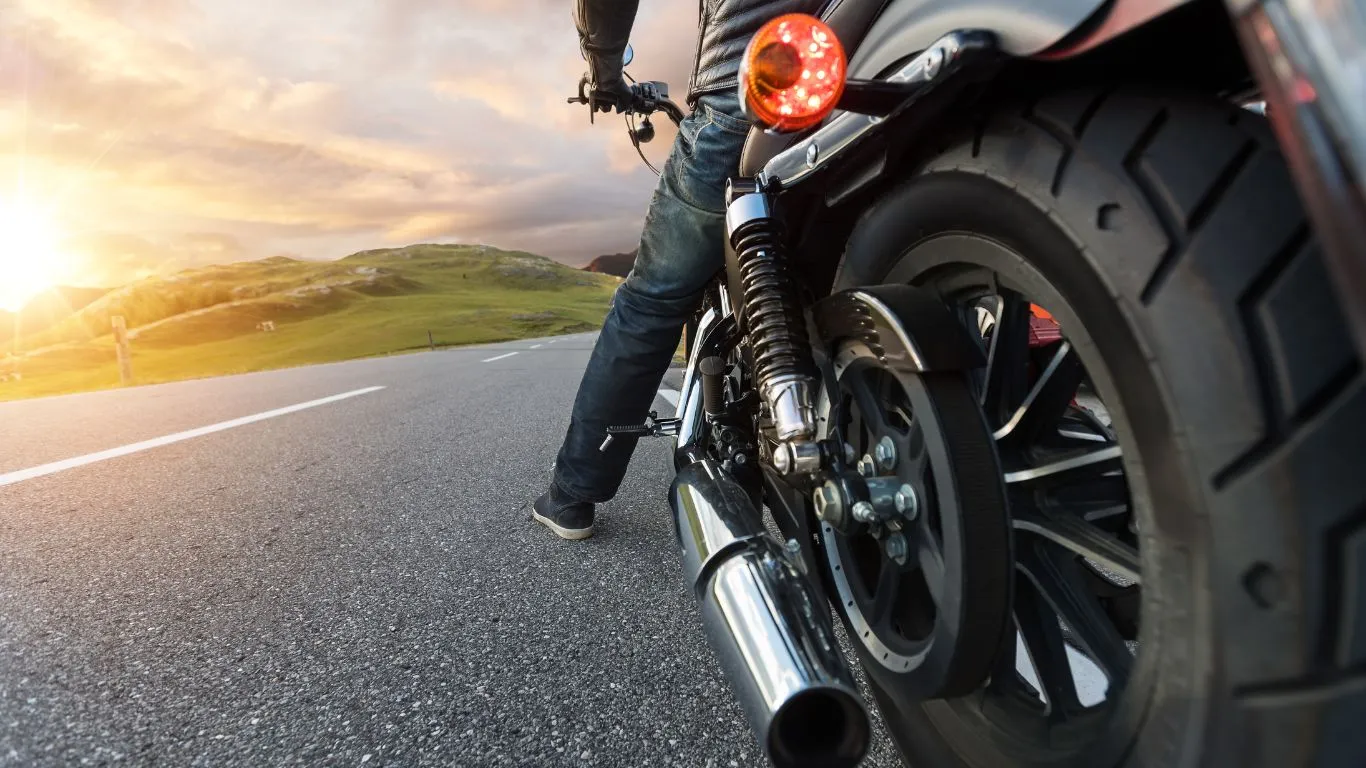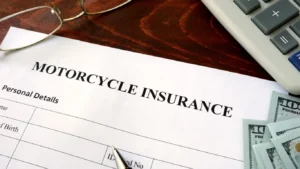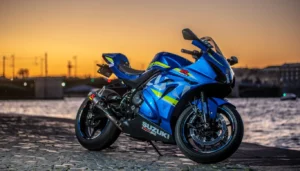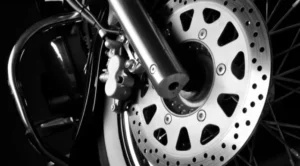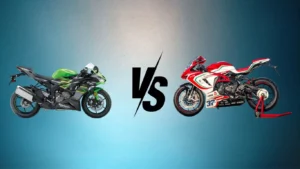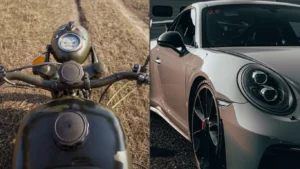Motorcycles are appreciated in transportation for their agility, speed, and great fuel efficiency. However, there’s a common question that often arises among motorcyclists: Can motorcycles ride in HOV lanes? Given the specific rules and laws that govern the use of these lanes, it’s crucial for every rider to have a clear understanding.
The answer to this common question is yes. Motorcycles can ride in HOV lanes. The Federal Highway Administration (FHWA) allows motorcycles to use HOV lanes, regardless of passenger count or fuel type. Safety and efficiency make motorcycles less polluting. Although these are federal guidelines, local rules and regulations may vary, so riders should always check with local authorities to confirm.
Can Motorcycles Legally Ride in HOV Lanes?
Carpooling in HOV lanes reduces traffic. Many drivers wonder whether motorcycles are allowed in these lanes. Many question if motorcycles can use HOV lanes. Generally, they can. Motorcycles are indeed permitted to use HOV lanes in many areas.
However, regional differences can exist regarding this rule and motorcyclists are encouraged to familiarize themselves with the specific regulations in their area. This is to ensure safety, legal compliance, and general awareness on the road.
“Motorcycles are fuel-efficient and occupy less highway space,” says the FHWA. Thus, federal law allows them to use HOV lanes even with just the driver.”
Here are some key points to remember when considering motorcycles in HOV lanes:
- Not all states and cities follow the same rules: While federal law permits motorcycles in HOV lanes, some states or cities may have restrictions. Always check local traffic laws.
- Rules can change depending on the time: Some areas may only allow motorcycles in HOV lanes during certain times of the day.
- Some lanes may have motorcycle-specific restrictions: There may be specific lanes where motorcycles are not allowed, even if they are generally permitted in HOV lanes.
Differences matter. See a table outlining the rules in the most populous states:
For a more detailed look, let’s go through a table illustrating the regulations in some of the most populated states:
| State | Motorcycles in HOV Lanes | Notes |
|---|---|---|
| California | Yes | Motorcycles are allowed in all HOV lanes. |
| Texas | Yes | Some toll roads require motorcycles to have a toll tag to use HOV lanes. |
| Florida | Yes | Motorcycles are allowed in all HOV lanes, but must follow specific traffic rules. |
| New York | Yes | Motorcycles are allowed in all HOV lanes, but must obey the same rules as other vehicles. |
While motorcycles are generally allowed in HOV lanes, it’s crucial for all riders to know and understand the specific rules in their area.
For current information, contact your DMV or transportation department.
Exploring the HOV Rules for Motorcyclists
High Occupancy Vehicle (HOV) lanes, often referred to as carpool lanes, are designated traffic lanes for vehicles carrying multiple passengers.
High Occupancy Vehicle (HOV) or carpool lanes are for vehicles with multiple passengers. This article covers motorcycle lanes and rules.
Can they ride in the HOV lane? This article answers the rules.
Understanding HOV Lanes
HOV lanes were implemented primarily to reduce traffic congestion and encourage ridesharing. These lanes are typically less crowded and allow a smoother and faster ride. To use these lanes, you must usually have a specific number of occupants in your vehicle.
HOV lanes reduce traffic and encourage ridesharing. They are usually less congested, providing a faster commute. Normally, a certain number of passengers are required in a vehicle to use these lanes, but motorcycles are an exception.
HOV Rules for Motorcycles
The FHWA allows motorcycles in HOV lanes regardless of passenger count. America follows this rule.
“Federal law permits motorcycles to use HOV lanes, even if the motorcycle has only one occupant. This applies for all HOV lanes in the U.S.”
Reasons Behind the Rule
There are several reasons why motorcycles are allowed in HOV lanes. These are:
- Safety: Motorcycles are less visible than cars, so ride in less crowded lanes to reduce collision risk.
- Size: Motorcycles take up less space on the road, which helps to alleviate congestion.
- Efficiency: Motorcycles generally consume less fuel than cars, promoting energy efficiency and reducing pollution.
Exceptions to the Rule
While the rule allowing motorcycles in HOV lanes is applied nationwide, there can be some exceptions at the state level. Some states have restrictions. Thus, the best source of information is the local Department of Transportation.
Common HOV Rules Across States
Here are some state-wide laws.
| State | Rule |
|---|---|
| California | Motorcycles are allowed in all HOV lanes regardless of the number of passengers. |
| New York | Motorcycles are allowed in all HOV lanes, but must obey a minimum speed limit. |
| Virginia | Motorcycles can use HOV lanes without restrictions, but lanes may be closed during certain hours for safety reasons. |
Motorcycles can ride in HOV lanes in all states, but check local laws. Ride responsibly.
Benefits of Allowing Motorcycles in HOV Lanes
High Occupancy Vehicle (HOV) lanes have been designed to promote carpooling and therefore reduce congestion on our roads. However, the question often arises – can motorcycles ride in HOV lanes? The answer is a resounding yes. There are numerous benefits to allowing motorcycles in HOV lanes, and we will delve into those here.
- Improved Traffic Flow: Motorcycles are smaller than cars, taking up less road space. They ease traffic by navigating lanes.
- Reduced Congestion: By encouraging motorcyclists to use the HOV lanes, more space will be freed up in the regular lanes, reducing overall congestion.
- Lower Emission Levels: Motorcycles pollute less than cars because they use less petrol and emit less CO2.
In High Occupancy Vehicle (HOV) lanes, motorcycles improve traffic flow and the environment.
Regulations Governing Motorcycles in HOV Lanes
Motorcycles using High Occupancy Vehicle (HOV) lanes have benefits but also obligations. Regulations vary from state to state.
| Regulation | Description |
|---|---|
| Helmet Requirement | Motorcyclists are usually required to wear an approved helmet for safety reasons. |
| Lane Splitting | While lane splitting is allowed in some states, it’s not generally permitted in HOV lanes. |
| Passenger Limit | There is typically no limit to the number of passengers on a motorcycle in the HOV lane. |
As a motorcyclist, you should familiarize yourself with these regulations and adhere to them to safely and legally utilize the HOV lanes.
Challenges Faced by Motorcyclists in HOV Lanes
Motorcyclists often struggle with using High Occupancy Vehicle (HOV) lanes due to misconceptions, rules, and safety concerns.
Key challenges include:
- Misunderstanding of Rules: Many motorists don’t know the rules about motorcyclists in HOV lanes, leading to confusion and possible traffic violations.
- Safety Concerns: Motorcyclists face safety risks due to speed differences between HOV and regular lanes, and careless lane changes by other drivers.
- Lack of Enforcement: HOV lane rules are often not enforced, leading to drivers ignoring motorcyclists’ rights to use these lanes.
Motorcycle riders, while being accorded the same rights and responsibilities as other road users, may encounter challenges that can impede their efficient utilization of High Occupancy Vehicle (HOV) lanes.
The table below lists strategic approaches to address the above issues:
| Challenge | Proposed Solution |
|---|---|
| Misunderstanding of Rules | Public education campaign about the rules and regulations of HOV lanes. This could include signage, digital media campaigns, and public service announcements. |
| Safety Concerns | Implementing additional safety measures in HOV lanes, such as increased signage warning of motorcyclists, physical barriers between lanes, and strict speed limit enforcement. |
| Lack of Enforcement | Increased enforcement of HOV lane rules, including more frequent patrols and harsher penalties for violations. |
Motorcyclists using HOV lanes face several issues, but there are solutions. Motorcyclists and other drivers must understand and follow HOV lane rules to ensure road safety and efficiency.
Safety Precautions for Motorcyclists in HOV Lanes
Motorcyclists’ use of HOV lanes is debated. Motorcycles can use HOV lanes in many countries, including the US. State laws vary. It’s legal, but not always safe. We discuss HOV lane safety for motorcyclists below.
Understanding HOV Lanes
First, learn about HOV lanes. HOV lanes are roads for multi-passenger vehicles. These lanes promote carpooling and reduce traffic. Motorcyclists without passengers can use these lanes in many places.
Precaution No.1: Be Aware of Your Surroundings
A key safety precaution in HOV lanes – or any other road for that matter – is for motorcyclists to always be aware of their surroundings. Motorcycles are smaller and often faster than other vehicles on the road, which can make them harder to see.
“Motorcyclists need to assume that other drivers may not see them and should therefore always stay alert and prepared to take evasive action if necessary.”
Precaution No.2: Maintain Safe Distances
Another important safety tip is to always maintain a safe distance from other vehicles. This applies whether the motorcyclist is in the HOV lane or not.
“Maintaining a safe distance will provide enough time to react and take action in case of any sudden changes in the traffic situation.”
Precaution No.3: Obey Traffic Rules
It’s important to follow traffic laws. This includes following the speed limit, using turn signals, and not weaving in and out of traffic.
Precaution No.4: Wear Protective Gear
Protective gear is also crucial. This includes a helmet, gloves, boots, and a motorcycle jacket.
Precaotion No.5: Regular Motorcycle Maintenance
Maintaining a motorcycle regularly is crucial for its best performance and safety.
Even though motorcycles can use HOV lanes, riders must ensure they follow all safety rules. This ensures their safety and that of others on the road.
Impact of Motorcycles on HOV Lane Congestion
Motorcycles in High Occupancy Vehicle (HOV) lanes is a recent debatable topic. It’s a complicated issue with many factors.
Motorcycles, due to their small size and easy handling, cause less traffic in High Occupancy Vehicle (HOV) lanes. But, this doesn’t mean they’re completely free from possible issues. Mixing different types of vehicles in the same lane can cause additional problems.
Motorcycles are allowed in High Occupancy Vehicle (HOV) lanes because they use space efficiently. They take up less room than cars or trucks, so more vehicles can fit on the same stretch of road, possibly reducing traffic.
But, some believe that motorcycles in HOV lanes are a safety risk. They’re less visible and can be missed by other drivers.
Moreover, the speed differentials between motorcycles and larger vehicles can be a safety hazard. Although motorcycles can move through traffic more easily, the relative speed difference between motorcycles and other vehicles can cause unpredictability, which may lead to accidents.
The inconsistent rules about motorcycles using HOV lanes in different states can lead to confusion for drivers.
Allowing motorcycles in HOV lanes can reduce traffic. But, the risks need serious consideration. Policymakers and safety professionals should carefully weigh these factors when making rules for motorcycles in HOV lanes.
A quick look at the advantages and disadvantages:
| Pros | Cons |
|---|---|
| Reduced congestion due to smaller vehicle size | Potential safety risks due to speed differentials |
| More efficient use of road space | Less visibility compared to larger vehicles |
| Potential to incentivize more people to ride motorcycles, reducing overall traffic | Lack of consistent rules across different states leading to confusion |
As with many traffic-related issues, the impact of motorcycles on HOV lane congestion is not black-and-white. It requires a balance between efficiency and safety, as well as clear, consistent rules that can easily be followed by all road users.
HOV Lane Regulations for Motorcyclists in Different States
High-occupancy vehicle (HOV) lanes are for vehicles with multiple passengers. Carpooling is encouraged by these lanes. However, motorcycles’ eligibility in these lanes is often disputed. This depends on the state or region. We’ll get specific.
General Rules for Motorcycles in HOV Lanes
HOV lanes allow motorcycles regardless of occupant count. FHWA regulations state:
“Federal law allows motorcycles to use HOV lanes, even if the rider is alone.”
It is important to note that while the FHWA sets the overall guidelines, states can set their own HOV lane use rules. Thus, motorcyclists must learn local traffic laws.
State-Specific HOV Lane Regulations
Now let’s take a look at some state-specific rules for motorcycles in HOV lanes:
| State | Motorcycles in HOV lanes |
|---|---|
| California | Yes, permitted at all times |
| Florida | Yes, permitted at all times |
| Washington | Yes, permitted at all times |
| Arizona | Yes, permitted at all times |
| New York | No, only permitted during designated hours |
Exceptions
HOV lanes allow motorcycles, but there are exceptions. In New York, motorcycles can use HOV lanes during certain hours. This is an exception, but it shows why motorcyclists should know their local laws.
Final Thoughts
Motorcycles can ride in HOV lanes, but state laws vary. Motorcyclists should learn local laws to avoid fines and promote safe driving. Road safety knowledge is power.
